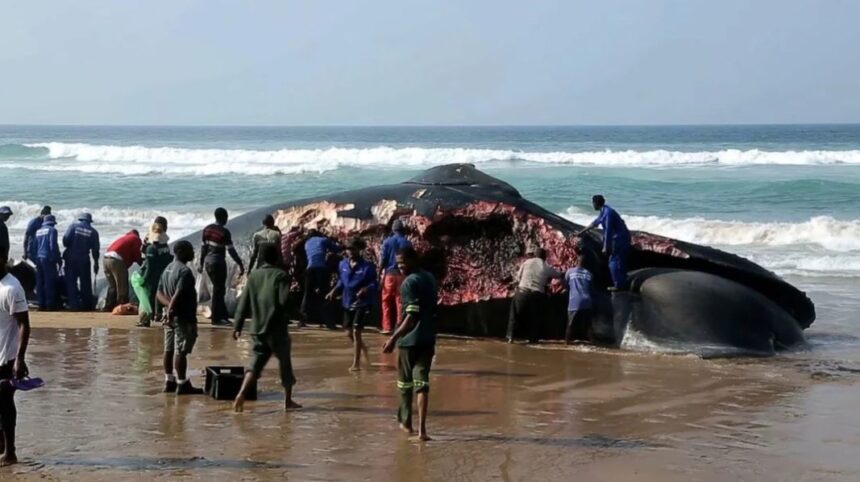The ocean is full of mysteries, and one such occurrence that has captured the attention of many is the case of a blue whale reportedly blue whale bitten in half. This shocking incident raises numerous questions about the possible causes, the predators involved, and the environmental factors that might contribute to such events.
In this blog post, we will explore this phenomenon in detail, considering scientific insights and potential explanations.
The Blue Whale: The Ocean’s Gentle Giant
The blue whale (Balaenoptera musculus) is the largest animal ever to exist on Earth. Despite its immense size and strength, it primarily feeds on tiny krill and has few natural predators. Understanding the biology of these marine giants can help us analyze the mystery of a blue whale being bitten in half.
Quick Facts About Blue Whales:
| Characteristic | Details |
|---|---|
| Average Length | Up to 100 feet |
| Weight | Around 200 tons |
| Diet | Krill |
| Natural Predators | Rare (mostly orcas) |
| Lifespan | 70–90 years |
What Does blue whale bitten in half Mean?
When reports or images surface of a blue whale seemingly blue whale bitten in half it could mean several things:
- Predatory Attack: A large marine predator attacked and caused severe injuries.
- Post-Mortem Damage: Scavengers feeding on a dead whale can create the appearance of bite marks.
- Decomposition and Ocean Currents: Natural decay and physical forces can tear apart carcasses, mimicking bite damage.
Possible Predators That Could Bite a Blue Whale
While blue whale bitten in half have few natural threats due to their size, certain marine creatures could potentially cause significant damage under specific circumstances.
1. Orcas (Killer Whales)
- Orcas are apex predators with coordinated hunting strategies.
- They have been observed attacking blue whale calves or weakened adults.
- A pod of orcas might work together to cause injuries that could appear as bite marks.
2. Large Sharks
- Great white sharks and other large species may scavenge on dead whales.
- Their powerful jaws could leave significant marks, but attacking and biting a blue whale in half is unlikely.
3. Unknown Predators or Rare Events
- Some speculate about the existence of unknown or rare marine predators capable of such feats, though evidence is scant.
Scientific Investigation
Marine scientists approach these events with caution, employing various techniques to determine what might have happened.
Steps Taken in Investigations:
- Bite Mark Analysis: Studying the shape, size, and depth of marks to identify potential predators.
- Decomposition Studies: Understanding how natural decay processes might alter the whale’s body.
- Environmental Factors: Examining the role of ocean currents, scavengers, and other ecological influences.
- DNA Sampling: Collecting predator DNA from bite wounds for identification.
Common Misconceptions
There are myths and exaggerations surrounding incidents like these, including speculation about prehistoric predators like the megalodon. While fascinating, such claims lack scientific evidence and should be taken with a grain of salt.
Conclusion
The case of a blue whale bitten in half highlights the complexities of ocean ecosystems and the interactions between marine species. While it’s natural to be captivated by the mystery, thorough scientific research is essential to uncover the truth.
Understanding such phenomena not only satisfies our curiosity but also contributes to the conservation and protection of marine life.
Have you come across such stories or reports? Share your thoughts and insights in the comments below!




